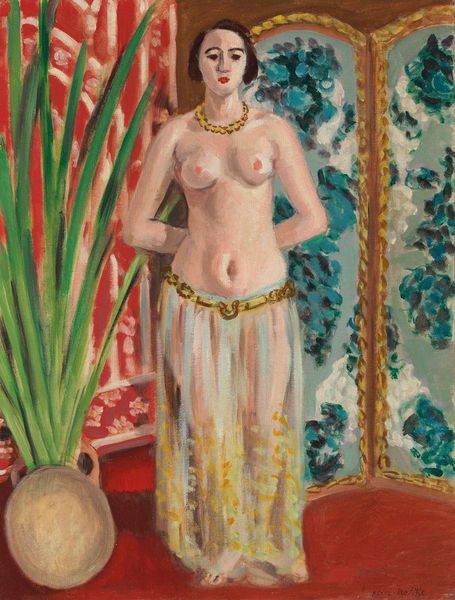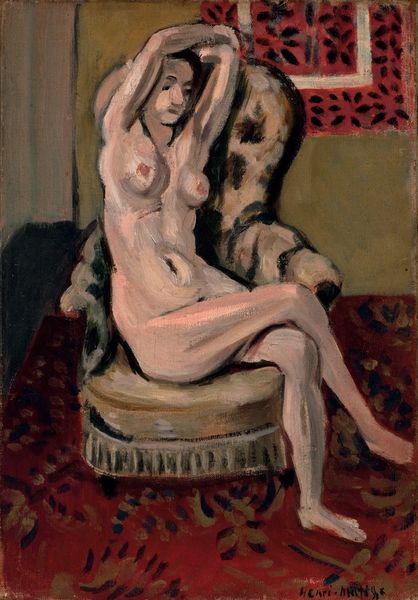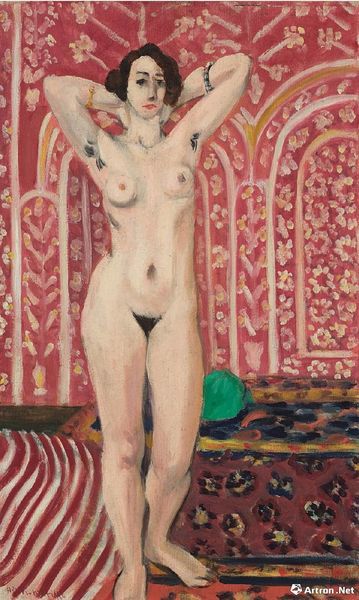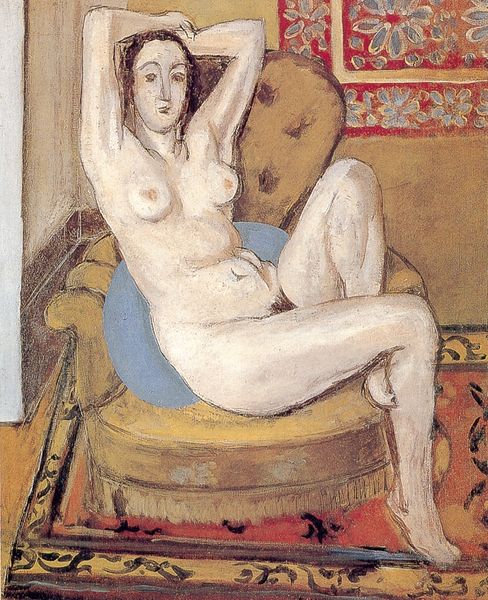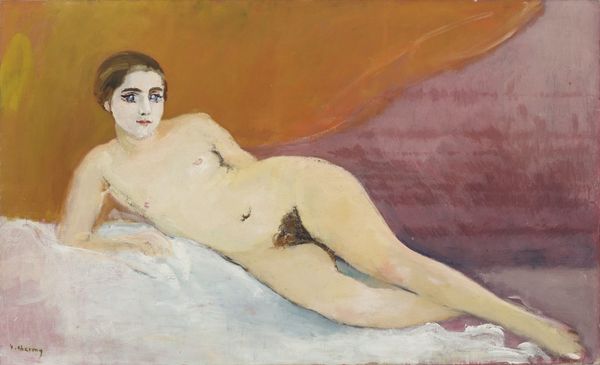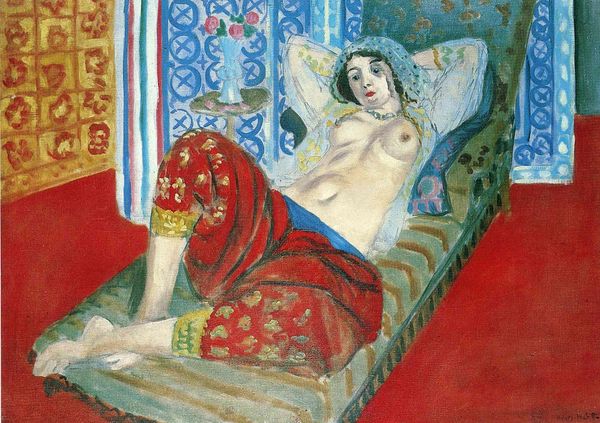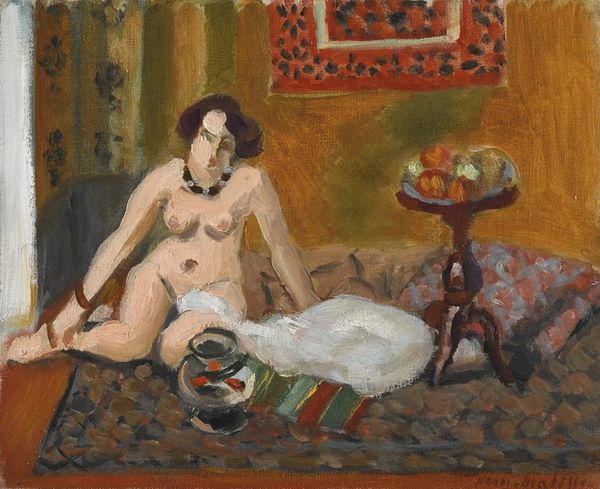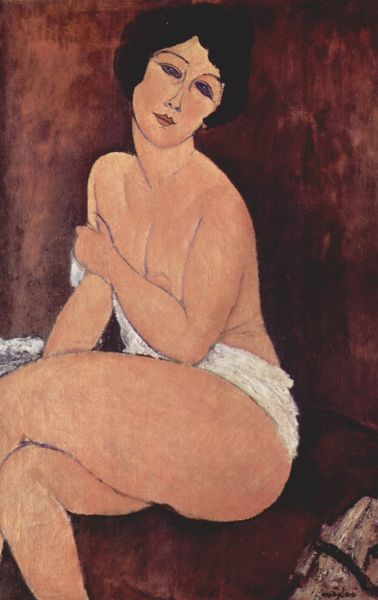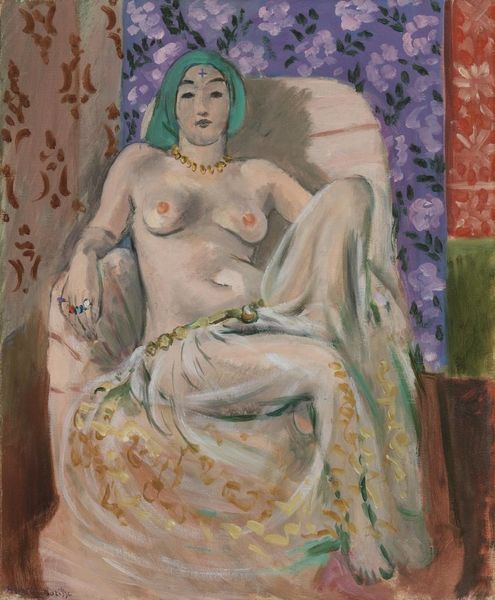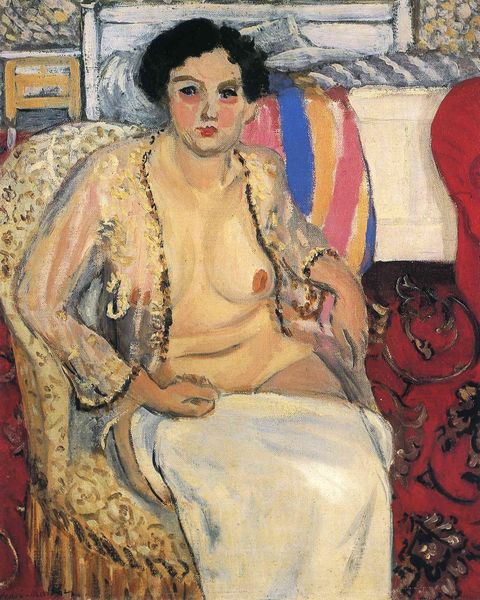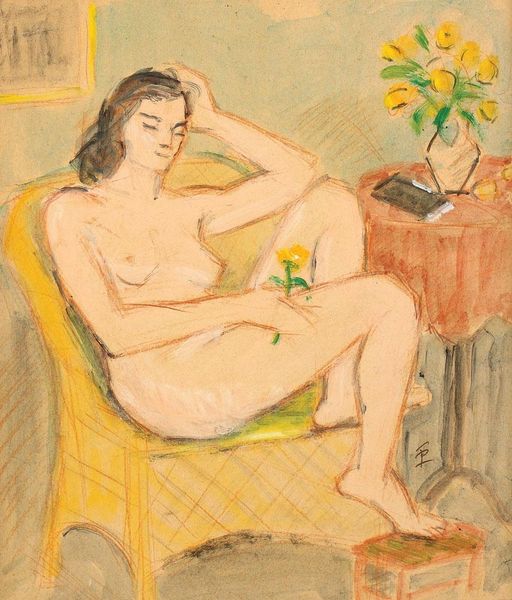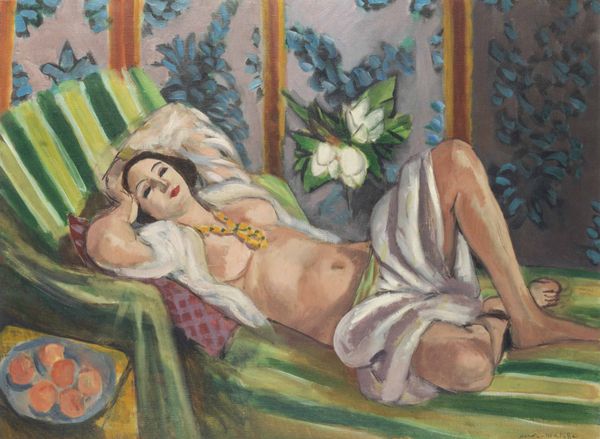
Moorish Woman with Upheld Arms 1923
0:00
0:00
henrimatisse
Museum of Modern Art (MoMA), New York City, NY, US
Dimensions: 65 x 50 cm
Copyright: Public domain US
Curator: Henri Matisse’s “Moorish Woman with Upheld Arms,” completed in 1923, resides here at MoMA. What's your initial reaction? Editor: A strange stillness. She’s seated amidst all this pattern, but her pose feels less relaxed and more... presented. Is it the upturned arms, or the direct gaze? It is also a strangely intimate, immediate, even raw work, which is enhanced by the clear display of visible body hair. Curator: That stillness likely stems from Matisse's interest in the posed model, reflecting studio practices. Consider the textiles - the patterned wallpaper, the striped chair, the woman’s gauzy dress – and how he uses these to flatten space and emphasize surface design, as he experimented after traveling to Nice and embracing the aesthetics he found there. The dress itself looks like it could have been a length of fabric repurposed for the sitting. Editor: Absolutely. And those textiles shout "Orientalism," a very constructed fantasy the art world peddled at the time, as much about power dynamics as about visual delight, a vision sold by the elite establishment, mostly comprised by white males like Matisse, of non-Europeans, here a vision of idealized female submissive sexuality. How did those views shape artistic output and reception? Curator: That's key to understanding it. It's crucial to remember how museums and galleries perpetuated certain visions. Matisse wasn't passively observing; he actively chose those models, those textiles, those poses, fitting into a larger system of image production, and image expectations of a dominant (male) European demographic. How do you see the actual "making" contributing here? The painting has areas of intense finish and others of seeming carelessness. Editor: The oil paint itself functions materially in interesting ways, especially when we consider this through an exploration of the labour involved, because here, those contrasts seem to emphasise or contradict his process and labor: quick, decisive brushstrokes versus laboured blending. Also consider that that direct gaze may also signify, perhaps, some understanding by the model herself of this staged, commercial exchange. Curator: Ultimately, “Moorish Woman with Upheld Arms” functions as a testament to the tangled interplay of studio practices, colonial fantasies, and artistic innovation of Matisse, which demands us to grapple with questions about cultural exchange and artistic vision in shaping narratives in that time and also now. Editor: A painting that then, offers a chance to peel back the layers and examine how institutions then and now can perpetuate or even challenge the exoticism embedded within even seemingly straightforward portraits, both material and figurative.
Comments
No comments
Be the first to comment and join the conversation on the ultimate creative platform.
